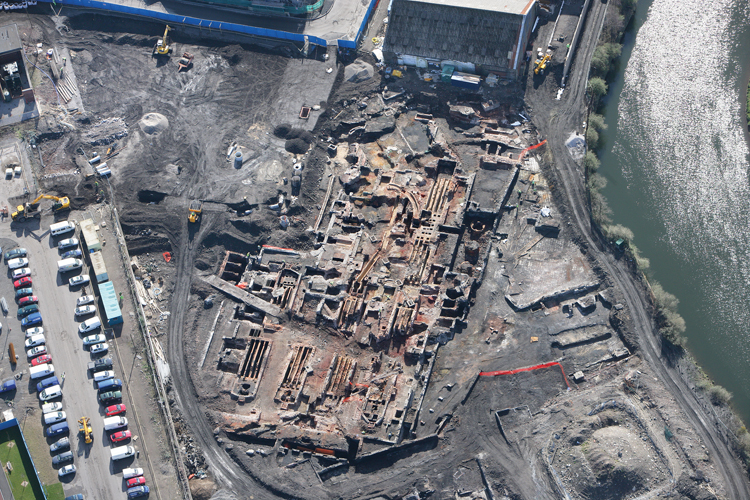Content can be downloaded for non-commercial purposes, such as for personal use or in educational resources.
For commercial purposes please contact the copyright holder directly.
Read more about the The Creative Archive Licence.
Description
Swansea was the world centre of copper smelting during the Industrial Revolution, but most of the physical structures of this great industry have long been demolished or hidden by later development. The Royal Commission investigated copperworks sites at the time of large-scale demolition and land reclamation in the 1960s, when much disappeared forever.
A new housing development on brown-field land in 2007 and 2008 gave an exceptional opportunity to reveal the hidden heritage of the copper industry, at the site of the Upper Bank smelting works, established in 1755. The Commission had previously identified Swansea's last standing copper-smelting hall here and it advised that substantial remains of early furnaces would be found below ground. Glamorgan-Gwent Archaeological Trust accordingly requested an archaeological watching-brief during development. As the buildings were cleared all that was visible to Oxford Archaeology, the contractors employed by the developer, Barratts, were the concrete substructures of later buildings. However, when these were cut through they revealed something resembling a hidden city, consisting of numerous structures from the early copper and zinc works. This aerial photograph taken in March 2008 showed a large area of the central part of the site uncovered. On the right, the quays along the River Tawe, paved with cast slag blocks, were where copper ore that came by sailing ship from Cornwall, Anglesey and Chile was stockpiled for distribution on radiating narrow-gauge railways. The most prominent features across the site are the nine furnaces dating from its conversion from copper to zinc smelting after 1890, each with four parallel gas flues. The three circular structures mid-way up the right-hand side produced gas to fuel them. At the left-hand side towards the bottom are four pits (crossed by a concrete ramp) that were the bases of the earlier copper furnaces. Copper-smelting at Swansea was carried out by 'the Welsh method', which involved successive roastings of ore - at least twenty of them. The reverbatory-type furnaces drew the heat through and reflected it off vaulted roofs, allowing the metal to be uncontaminated by the coal. Their stoking holes, the pits into which waste from each furnace was cleaned and the bases of chimneys all survived. Remains were also excavated of granulation pits where the molten copper from the furnaces was dropped into water so as to solidify as granules that were taken for further processing. Interlocking cast-iron barrowing planks were found: it is known from records that a woman labourer called Mrs Matthews barrowed 23 tons of copper ore in a single day here (she was said to be 'too tired to attend chapel'). At the centre of the site is the base of a large calcining furnace, marked by two oblongs and an archaeologist in a yellow jacket lying with arms and legs outstretched. This was where the initial drying and roasting of the ore took place. The contents were extracted through rectangular slots, the workers using long rakes and covering their mouths to reduce their exposure to the sulphur. Other sites in the Swansea valley may yet produce further significant remains of 'Copperopolis'.
Add your photographs and memories to the site to help tell the story of Swansea's Copper heritage.





Do you have information to add to this item? Please leave a comment
Comments (1)
You must be logged in to leave a comment